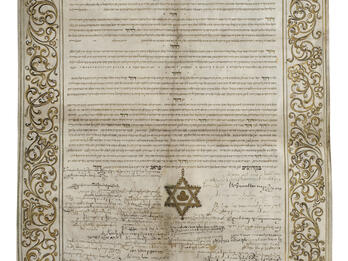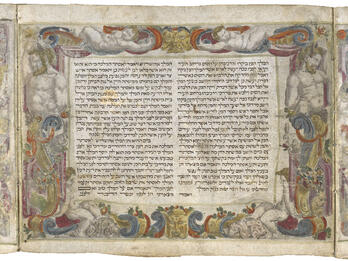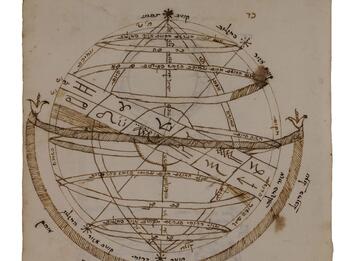Raphael Immanuel Ricchi
Born in Ferrara, Raphael Immanuel ben Abraham Ḥay Ricchi was orphaned at a young age and was raised by relatives. Ricchi lived in various Italian towns, tutoring children of wealthy families, and was ordained in Trieste in 1717. He spent two years in Safed studying Lurianic kabbalah and was there ordained again. In 1720, when the land of Israel was ravaged by a plague, he returned to Italy, and on the way was held captive by pirates for forty days. Ricchi spent the rest of his life traveling extensively in Europe and the Middle East engaged in trade. He was killed by robbers while traveling and was buried in the Jewish cemetery in Cento, Italy. Ricchi wrote commentaries and novellae on sections of the Bible, Mishnah, and Talmud, in addition to kabbalistic works and poems. His best-known text is Mishnat ḥasidim (Teaching of the Pious), an explanation of Lurianic kabbalah modeled on the structure of tractates and orders in the Mishnah. Born in Ferrara, Raphael Immanuel ben Abraham Ḥay Ricchi was orphaned at a young age and was raised by relatives. Ricchi lived in various Italian towns, tutoring children of wealthy families, and was ordained in Trieste in 1717. He spent two years in Safed studying Lurianic kabbalah and was there ordained again. In 1720, when the land of Israel was ravaged by a plague, he returned to Italy, and on the way was held captive by pirates for forty days. Ricchi spent the rest of his life traveling extensively in Europe and the Middle East engaged in trade. He was killed by robbers while traveling and was buried in the Jewish cemetery in Cento, Italy. Ricchi wrote commentaries and novellae on sections of the Bible, Mishnah, and Talmud, in addition to kabbalistic works and poems. His best-known text is Mishnat ḥasidim (Teaching of the Pious), an explanation of Lurianic kabbalah modeled on the structure of tractates and orders in the Mishnah.




